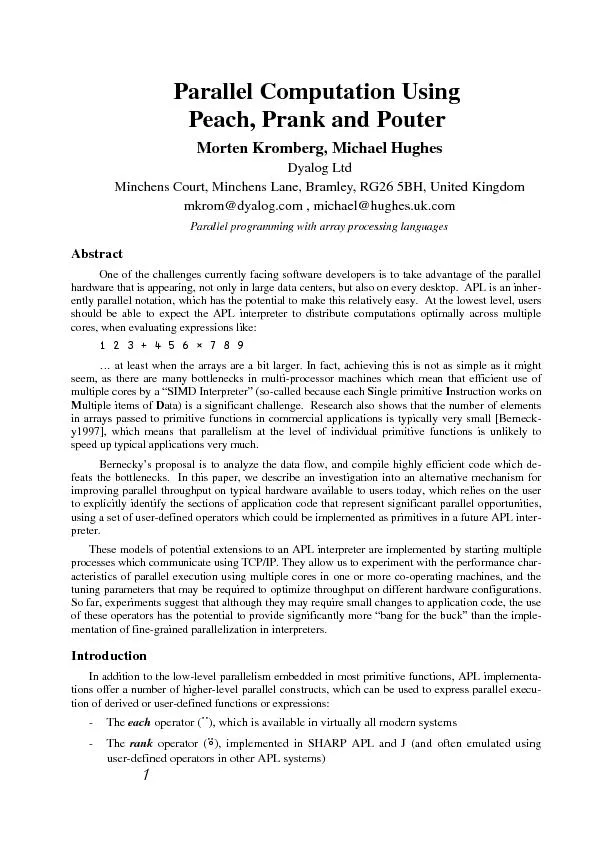PDF-One of the challenges currently facing software developers is to take
Author : lois-ondreau | Published Date : 2016-07-12
The outer product operator which is available in all systems The in Dyalog APL when placed between an array of objects on the left and an expression on the right
Presentation Embed Code
Download Presentation
Download Presentation The PPT/PDF document "One of the challenges currently facing s..." is the property of its rightful owner. Permission is granted to download and print the materials on this website for personal, non-commercial use only, and to display it on your personal computer provided you do not modify the materials and that you retain all copyright notices contained in the materials. By downloading content from our website, you accept the terms of this agreement.
One of the challenges currently facing software developers is to take: Transcript
Download Rules Of Document
"One of the challenges currently facing software developers is to take"The content belongs to its owner. You may download and print it for personal use, without modification, and keep all copyright notices. By downloading, you agree to these terms.
Related Documents














